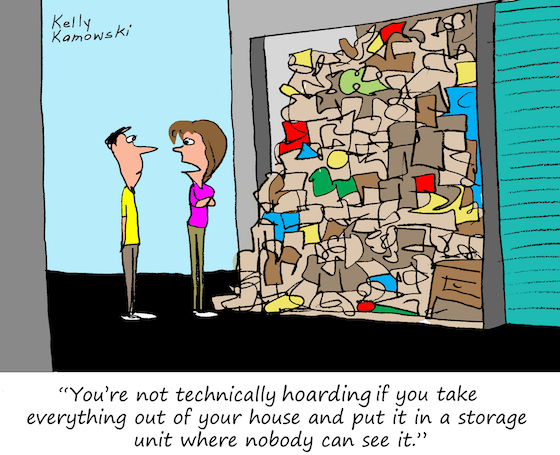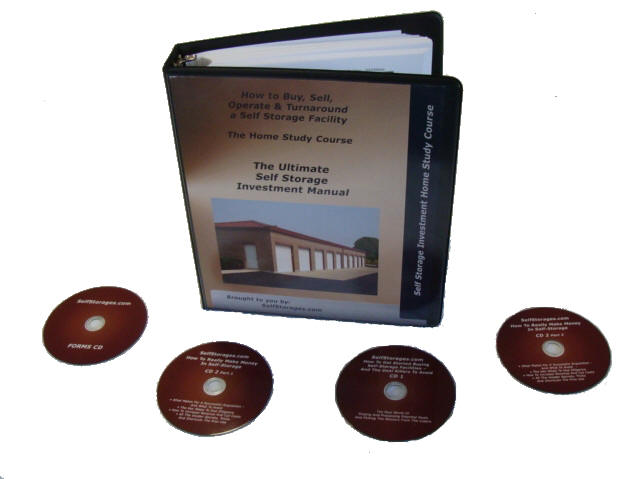While there was a great amount of interest rate concern recently, that seems to have abated over the past month. Janet Yellen appears unwilling to pull the trigger on higher interest rates without a clear indication of strength in the U.S. and world economy – and that’s unlikely to happen any time soon. The fact that interest rates appear to be staying low is great news for real estate investing, as low rates produce large yield spreads and give continued confidence in the debt markets. We never believed that we would see the lowest interest rates in American history last for nearly a decade. These are definitely historic times that we are living in.
Memo From Frank & Dave
The Dollars And Cents Of Self-Storage Investing

The real reason that any of us invest in real estate is summed up in a single word: “money”. We buy and operate properties with the sole intention of making money with them. And we measure our success with some standard measurement tools. So let’s review the tools that allow us to gauge the performance of a self-storage facility.
Cap rate
This is the beginning measure of success. A “cap rate” is a slang word for “capitalization rate” which is the EBITDA (net income) divided by the total cost of the project. For example, a self-storage facility that has an EBITDA of $100,000 and costs $1,000,000 is a 10% cap rate. The cap rate that most self-storage investors seek is a range of 7% to 10%. So if you’re looking at a deal that’s a 4% cap rate, then you’re sure to feel that you’ve failed, and if you find one at a 12% cap rate, then that’s a great deal. Essentially, the higher the cap rate, the better the economics are.
Cash-on-cash return
This is the return on your down payment. If you put $200,000 on a self-storage facility and it had a 20% cash-on-cash return, then you’d receive $40,000 per year return on the cash you put down. For many buyers, this is a very important measure, as most investors are really targeting a certain yield on their cash. Just as a CD pays 1% on the cash you put in, the cash-on-cash return gauges the real return you are going to receive on your hard-earned dollars. If you have a cash-on-cash return of 10% right now, for example, that really would be equivalent to ten years of a CD yield at 1%.
Spread
This is the difference between the cap rate and the interest rate on your loan. Assuming that you put down 20% on a self-storage property, then a 3-point spread equates to a 20% cash-on-cash return. A 3 point spread might mean that your cap rate is 8% and your loan is at 5%, or your loan is at 6% and your cap rate is 9%. Since a 20% cash-on-cash return is the benchmark goal of many real estate investors, a 3 point spread is the magical ingredient to achieve that level of return.
EBITDA
EBITDA stands for Earnings Before Interest Taxes Depreciation and Amortization, which basically means the net income from the property before your income tax and note payment. While EBITDA is not a performance measurement, it is a tool that you need to know if you’re going to produce the actual formulas.
Conclusion
A self-storage facility is like an engine that makes money. You want to know how much financial horsepower that engine has, and how many RPMs of cash it can generate. Those are the measurement tools that allow you evaluate that potential.
Self Storage Home Study Course
Our Home Study Course is not like anything you have ever listened to or read before. We do not fill it with a bunch of fluff on how your are going to make a million bucks with no money down. We tell you the whole story... the good, the bad, and the sometimes ugly.
Click Here for more information.
How Self-Storage Insulates Itself From A Rollercoaster Economy

Nobody can say that this is not a wild economic world today. Within the past twelve months we’ve seen oils prices fall by 70%, several world economies slide into recession, and interest rates maintain their run as the lowest in U.S. history. So in these times of economic uncertainty, investors are seeking safe havens that are insulated from this economic upheaval. And self-storage facilities fare very well.
A necessity and not a luxury
When self-storage was first developed in the 1960s and 1970s, it was thought to be a luxury. People with lots of possessions would need a place to store them. But it was considered a luxury as nobody really needed to store things. However, over the past decade self-storage has proven to be a necessity, as occupancy actually climbed since the Great Recession began in 2008. The reason? People who are in a state of upheaval store their possessions while they seek stability. And for millions of others, it just makes sense to store your excess stuff in a storage unit over your very expensive price-per-foot in your home.
Superior collections structure
If you don’t pay your self-storage rent, the facility owner will eventually be able to sell the contents of your locker to the highest bidder. This is well documented on the popular show “Storage Wars”. Because of this aggressive posture, most people pay their self-storage rent with great priority. Those who don’t can often find that their stiff brings offers that gets the storage unit owner paid in full.
Little capital improvements needed
Self-storage is not a capital intensive business. A self-storage facility has few moving parts besides the door. The only power is a light bulb in each unit. There’s no water or sewer except the office bathroom and the sprinkler system. Everything is either metal or concrete – materials that seldom wear out. As a result, self-storage is insulated from those terrifying capital calls that can be millions of dollars in apartments, hotels and office properties. And that keeps you from roller coaster risk.
Low operating costs
Self-storage facilities have one of the lowest operating cost ratios of any real estate sector. This saves you from roller coaster shock and risk as you have a very dependable cash flow to pay your bills. In addition, you can survive some degree of vacancy and still remain on track. And there are little costs to escalate, other than insurance and electricity.
A simple business model that won’t become outdated and obsolete
One great feature of self-storage is just how simple the model is. You give people four walls and a roof, and they store their stuff there in exchange for rent. This is not a model that you can improve on with modern technology. Unlike the grim fate of newspapers when the internet came on the scene, there’s nothing that can take away the need for storage. While there may be a virtual “cloud” you can store your data on, you cannot store your physical possessions there.
Conclusion
If you don’t like roller coasters, you’ll like self-storage. If you like the spins and dips of roller coasters, then it’s a good time to live in America, as it gets wilder by the day.
A Little Storage Humor

New Facilities for Sale on SelfStorages.com
Brought To You By SelfStoragesUniversity.com
If you need more information please call us (855) 879-2738 or Email [email protected]
